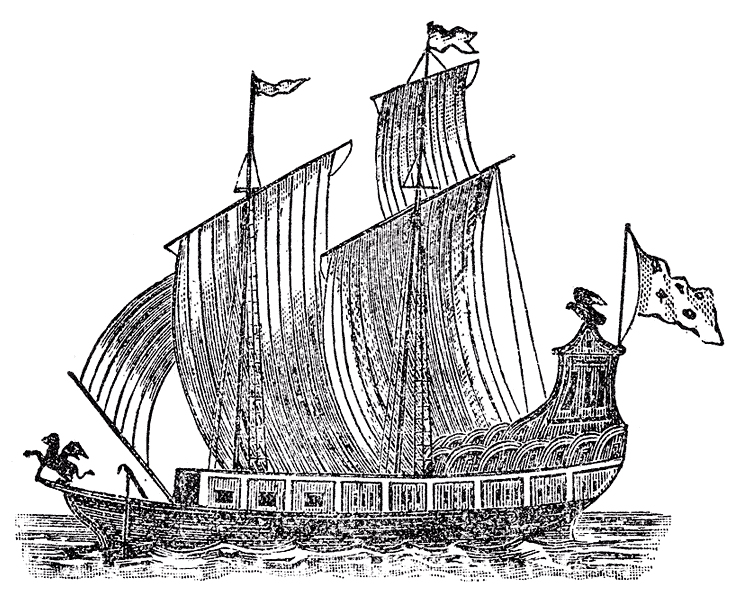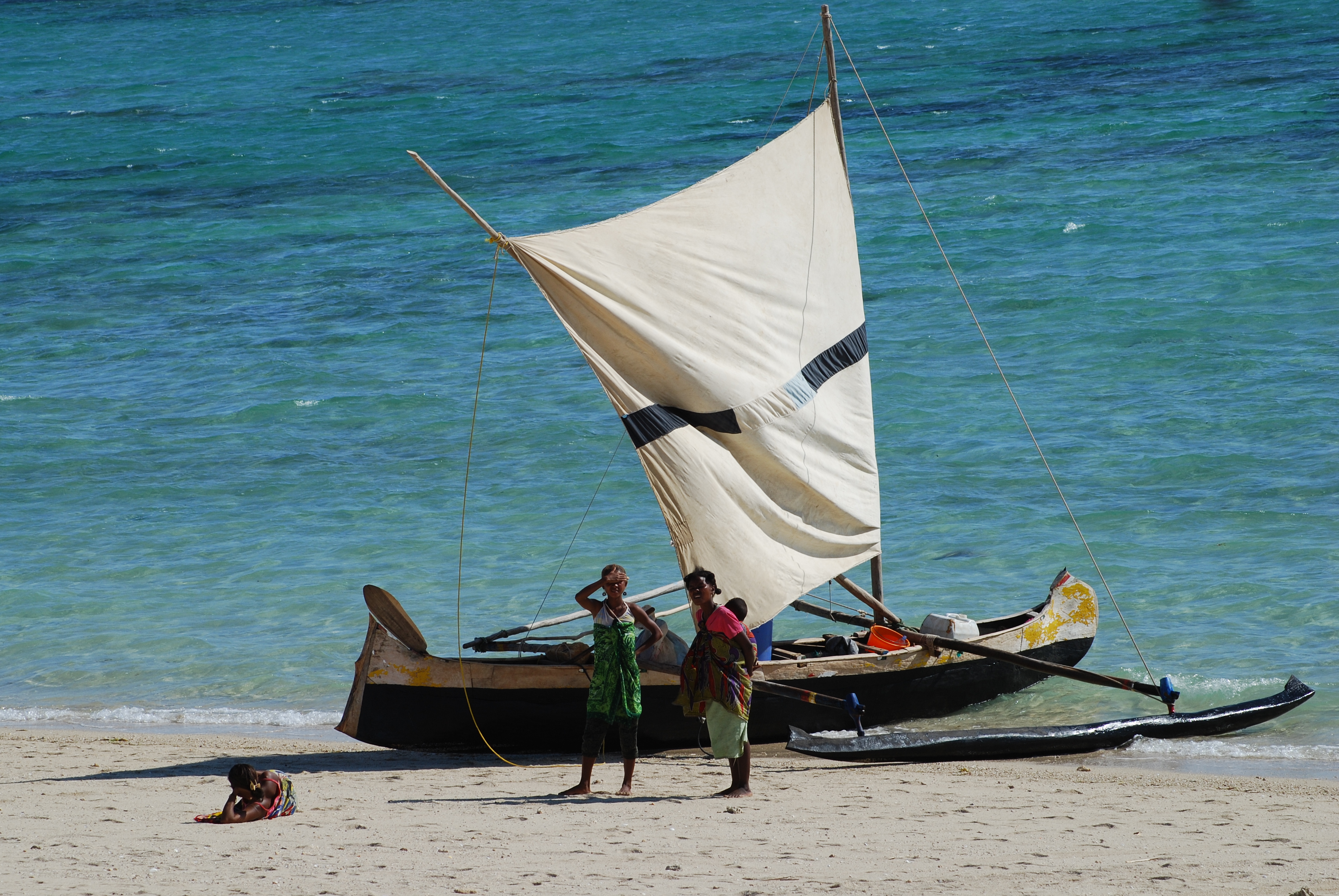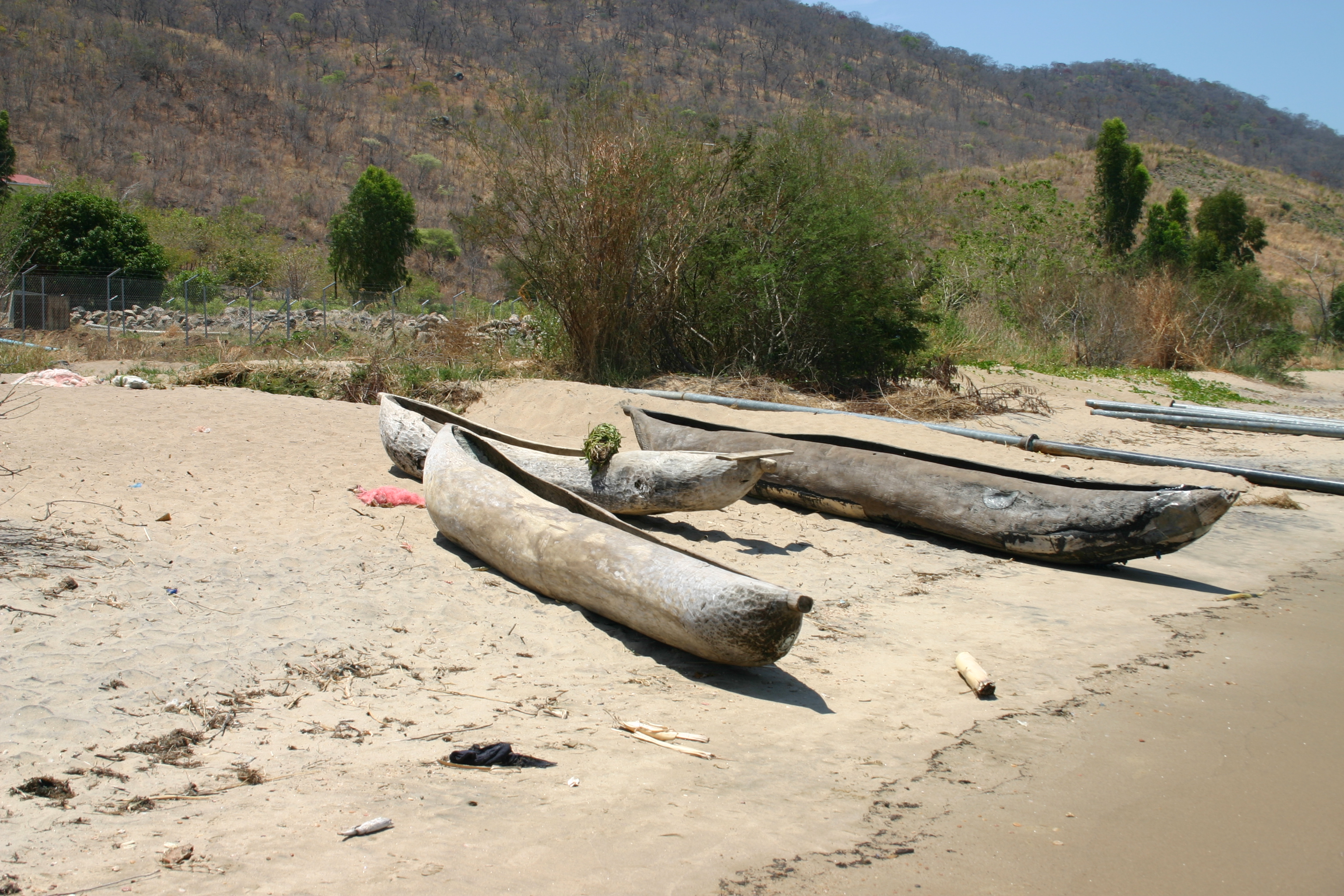|
Le Griffon
''Le Griffon'' (, ''The Griffin'') was a sailing vessel built by René-Robert Cavelier, Sieur de La Salle in 1679. ''Le Griffon'' was constructed and launched at or near Cayuga Island on the Niagara River and was armed with seven cannons. The exact size and construction of Le Griffon is not known but many researchers believe she was a 45-ton barque. She was the largest sailing vessel on the Great Lakes up to that time. La Salle and Father Louis Hennepin set out on ''Le Griffon''s maiden voyage on 7 August 1679 with a crew of 32, sailing across Lake Erie, Lake Huron and Lake Michigan through uncharted waters that only canoes had previously explored. The ship landed on an island in Lake Michigan where the local tribes had gathered with animal pelts to trade with the French. La Salle disembarked and on 18 September sent the ship back toward Niagara. On its return trip from the island, said to be located in the mouth of the body of water which is now known as Green Bay, it vanished ... [...More Info...] [...Related Items...] OR: [Wikipedia] [Google] [Baidu] |
Northwest Passage
The Northwest Passage (NWP) is the sea route between the Atlantic and Pacific oceans through the Arctic Ocean, along the northern coast of North America via waterways through the Canadian Arctic Archipelago. The eastern route along the Arctic coasts of Norway and Siberia is accordingly called the Northeast Passage (NEP). The various islands of the archipelago are separated from one another and from Mainland Canada by a series of Arctic waterways collectively known as the Northwest Passages, Northwestern Passages or the Canadian Internal Waters. For centuries, European explorers, beginning with Christopher Columbus in 1492, sought a navigable passage as a possible trade route to Asia, but were blocked by North, Central, and South America, by ice, or by rough waters (e.g. Tierra del Fuego). An ice-bound northern route was discovered in 1850 by the Irish explorer Robert McClure. Scotsman John Rae explored a more southerly area in 1854 through which Norwegian Roald Amundsen f ... [...More Info...] [...Related Items...] OR: [Wikipedia] [Google] [Baidu] |
Embassy
A diplomatic mission or foreign mission is a group of people from a state or organization present in another state to represent the sending state or organization officially in the receiving or host state. In practice, the phrase usually denotes an embassy, which is the main office of a country's diplomatic representatives to another country; it is usually, but not necessarily, based in the receiving state's capital city. Consulates, on the other hand, are smaller diplomatic missions that are normally located in major cities of the receiving state (but can be located in the capital, typically when the sending country has no embassy in the receiving state). As well as being a diplomatic mission to the country in which it is situated, an embassy may also be a nonresident permanent mission to one or more other countries. The term embassy is sometimes used interchangeably with chancery, the physical office or site of a diplomatic mission. Consequently, the terms "embassy reside ... [...More Info...] [...Related Items...] OR: [Wikipedia] [Google] [Baidu] |
Iroquois
The Iroquois ( or ), officially the Haudenosaunee ( meaning "people of the longhouse"), are an Iroquoian-speaking confederacy of First Nations peoples in northeast North America/ Turtle Island. They were known during the colonial years to the French as the Iroquois League, and later as the Iroquois Confederacy. The English called them the Five Nations, comprising the Mohawk, Oneida, Onondaga, Cayuga, and Seneca (listed geographically from east to west). After 1722, the Iroquoian-speaking Tuscarora people from the southeast were accepted into the confederacy, which became known as the Six Nations. The Confederacy came about as a result of the Great Law of Peace, said to have been composed by Deganawidah the Great Peacemaker, Hiawatha, and Jigonsaseh the Mother of Nations. For nearly 200 years, the Six Nations/Haudenosaunee Confederacy were a powerful factor in North American colonial policy, with some scholars arguing for the concept of the Middle Ground, in that Europe ... [...More Info...] [...Related Items...] OR: [Wikipedia] [Google] [Baidu] |
Saint Lawrence River
The St. Lawrence River (french: Fleuve Saint-Laurent, ) is a large river in the middle latitudes of North America. Its headwaters begin flowing from Lake Ontario in a (roughly) northeasterly direction, into the Gulf of St. Lawrence, connecting the American Great Lakes to the North Atlantic Ocean, and forming the primary drainage outflow of the Great Lakes Basin. The river traverses the Canadian provinces of Ontario and Quebec, as well as the U.S. state of New York, and demarcates part of the international boundary between Canada and the United States. It also provides the foundation for the commercial St. Lawrence Seaway. Names Originally known by a variety of names by local First Nations, the St. Lawrence became known in French as ''le fleuve Saint-Laurent'' (also spelled ''St-Laurent'') in 1604 by Samuel de Champlain. Opting for the ''grande riviere de sainct Laurens'' and ''fleuve sainct Laurens'' in his writings and on his maps, de Champlain supplanted previous Fre ... [...More Info...] [...Related Items...] OR: [Wikipedia] [Google] [Baidu] |
Lake Ontario
Lake Ontario is one of the five Great Lakes of North America. It is bounded on the north, west, and southwest by the Canadian province of Ontario, and on the south and east by the U.S. state of New York. The Canada–United States border spans the centre of the lake. The Canadian cities of Toronto, Kingston, Mississauga, and Hamilton are located on the lake's northern and western shorelines, while the American city of Rochester is located on the south shore. In the Huron language, the name means "great lake". Its primary inlet is the Niagara River from Lake Erie. The last in the Great Lakes chain, Lake Ontario serves as the outlet to the Atlantic Ocean via the Saint Lawrence River, comprising the eastern end of the Saint Lawrence Seaway. The Moses-Saunders Power Dam regulates the water level of the lake. Geography Lake Ontario is the easternmost of the Great Lakes and the smallest in surface area (7,340 sq mi, 18,960 km2), although it exceeds Lake Eri ... [...More Info...] [...Related Items...] OR: [Wikipedia] [Google] [Baidu] |
Count Frontenac
Louis de Buade, Comte de Frontenac et de Palluau (; 22 May 162228 November 1698) was a French soldier, courtier, and Governor General of New France in North America from 1672 to 1682, and again from 1689 to his death in 1698. He established a number of forts on the Great Lakes and engaged in a series of battles against the English and the Iroquois. In his first term, he supported the expansion of the fur trade, establishing Fort Frontenac (in what is now Kingston, Ontario) and came into conflict with the other members of the Sovereign Council over its expansion and over the corvées required to build the new forts. In particular, despite the opposition of bishop François de Laval, he supported selling brandy to the aboriginal tribes, which Laval considered a mortal sin. The conflict with the Sovereign Council led to his recall in 1682. His second term was characterised by the defence of Quebec from an English invasion during King William's War, a successful campaign against ... [...More Info...] [...Related Items...] OR: [Wikipedia] [Google] [Baidu] |
Bateau
A bateau or batteau is a shallow-draft, flat-bottomed boat which was used extensively across North America, especially in the colonial period and in the fur trade. It was traditionally pointed at both ends but came in a wide variety of sizes. The name derives from the French word, ''bateau'', which is simply the word for boat and the plural, bateaux, follows the French, an unusual construction for an English plural. In the southern United States, the term is still used to refer to flat-bottomed boats, including those elsewhere called jon boats. Construction Bateaux were flat-bottomed and double-ended. They were built with heavy stems at bow and stern and a series of frames amidships, likely from natural oak crooks when available, and planked with sawn boards, likely pine although builders would have used whatever material was available. These boats would have varied from place to place, from builder to builder and also evolved over time, however in general, they were long and ... [...More Info...] [...Related Items...] OR: [Wikipedia] [Google] [Baidu] |
Pirogue
A pirogue ( or ), also called a piragua or piraga, is any of various small boats, particularly dugouts and native canoes. The word is French and is derived from Spanish , which comes from the Carib '. Description The term 'pirogue' does not refer to a specific kind of boat, but is a generic term for small native boats in regions once colonized by France and Spain, particularly dugouts made from a single log. In French West Africa, the term refers to handcrafted banana-shaped boats used by traditional fishermen. In Madagascar, it also includes the more elaborate Austronesian ''lakana'' outrigger canoe. Pirogues are usually propelled by paddles that have one blade (as opposed to a kayak paddle, which has two). It can also be punted with a push pole in shallow water. Small sails are built by local fishermen, and they can also be employed. There are two types of sails with differences in their shapes: the square one is used mainly for fishing near the coast and is only useful ... [...More Info...] [...Related Items...] OR: [Wikipedia] [Google] [Baidu] |
Dugout (boat)
A dugout canoe or simply dugout is a boat made from a hollowed tree. Other names for this type of boat are logboat and monoxylon. ''Monoxylon'' (''μονόξυλον'') (pl: ''monoxyla'') is Greek – ''mono-'' (single) + '' ξύλον xylon'' (tree) – and is mostly used in classic Greek texts. In German, they are called Einbaum ("one tree" in English). Some, but not all, pirogues are also constructed in this manner. Dugouts are the oldest boat type archaeologists have found, dating back about 8,000 years to the Neolithic Stone Age. This is probably because they are made of massive pieces of wood, which tend to preserve better than others, such as bark canoes. Along with bark canoes and hide kayaks, dugouts were also used by Indigenous peoples of the Americas. Construction Construction of a dugout begins with the selection of a log of suitable dimensions. Sufficient wood must be removed to make the vessel relatively light in weight and buoyant, yet still strong enough to su ... [...More Info...] [...Related Items...] OR: [Wikipedia] [Google] [Baidu] |
Trading Posts
A trading post, trading station, or trading house, also known as a factory, is an establishment or settlement where goods and services could be traded. Typically the location of the trading post would allow people from one geographic area to trade in goods produced in another area. In some examples, local inhabitants could use a trading post to exchange local products for goods they wished to acquire. Examples Major towns in the Hanseatic League were known as ''kontors'', a form of trading posts. Charax Spasinu was a trading post between the Roman and Parthian Empires. Manhattan and Singapore were both established as trading posts, by Dutchman Peter Minuit and Englishman Stamford Raffles respectively, and later developed into major settlements. Other uses * In the context of scouting, trading post usually refers to a camp store in which snacks, craft materials, and general merchandise are sold. "Trading posts" also refers to a cub scout actitivty in which cub teams (or indivi ... [...More Info...] [...Related Items...] OR: [Wikipedia] [Google] [Baidu] |
Illinois (tribe)
The Illinois Confederation, also referred to as the Illiniwek or Illini, were made up of 12 to 13 tribes who lived in the Mississippi River Valley. Eventually member tribes occupied an area reaching from Lake Michicigao (Michigan) to Iowa, Illinois, Missouri, and Arkansas. The five main tribes were the Cahokia, Kaskaskia, Michigamea, Peoria, and Tamaroa. The name of the confederation was derived from the transliteration by French explorers of to ''Illinois'', more in keeping with the sounds of their own language. The tribes are estimated to have had tens of thousands of members, before the advancement of European contact in the 17th century that inhibited their growth and resulted in a marked decline in population. The Illinois, like many Native American groups, sustained themselves through agriculture, hunting, and fishing. A partially nomadic group, the Illinois often lived in longhouses and wigwams, according to the season and resources that were available to them in the s ... [...More Info...] [...Related Items...] OR: [Wikipedia] [Google] [Baidu] |








_1900.jpg)
